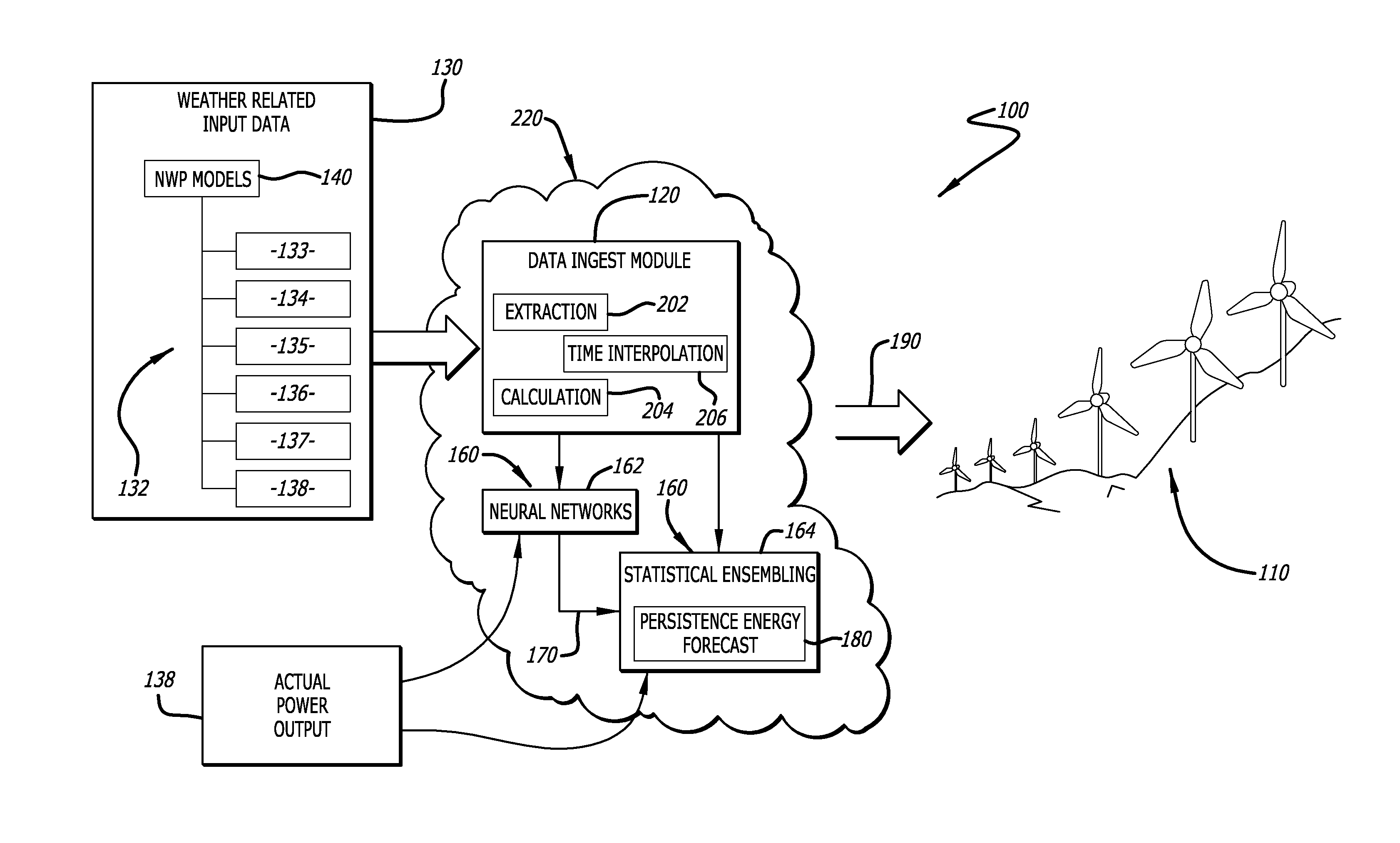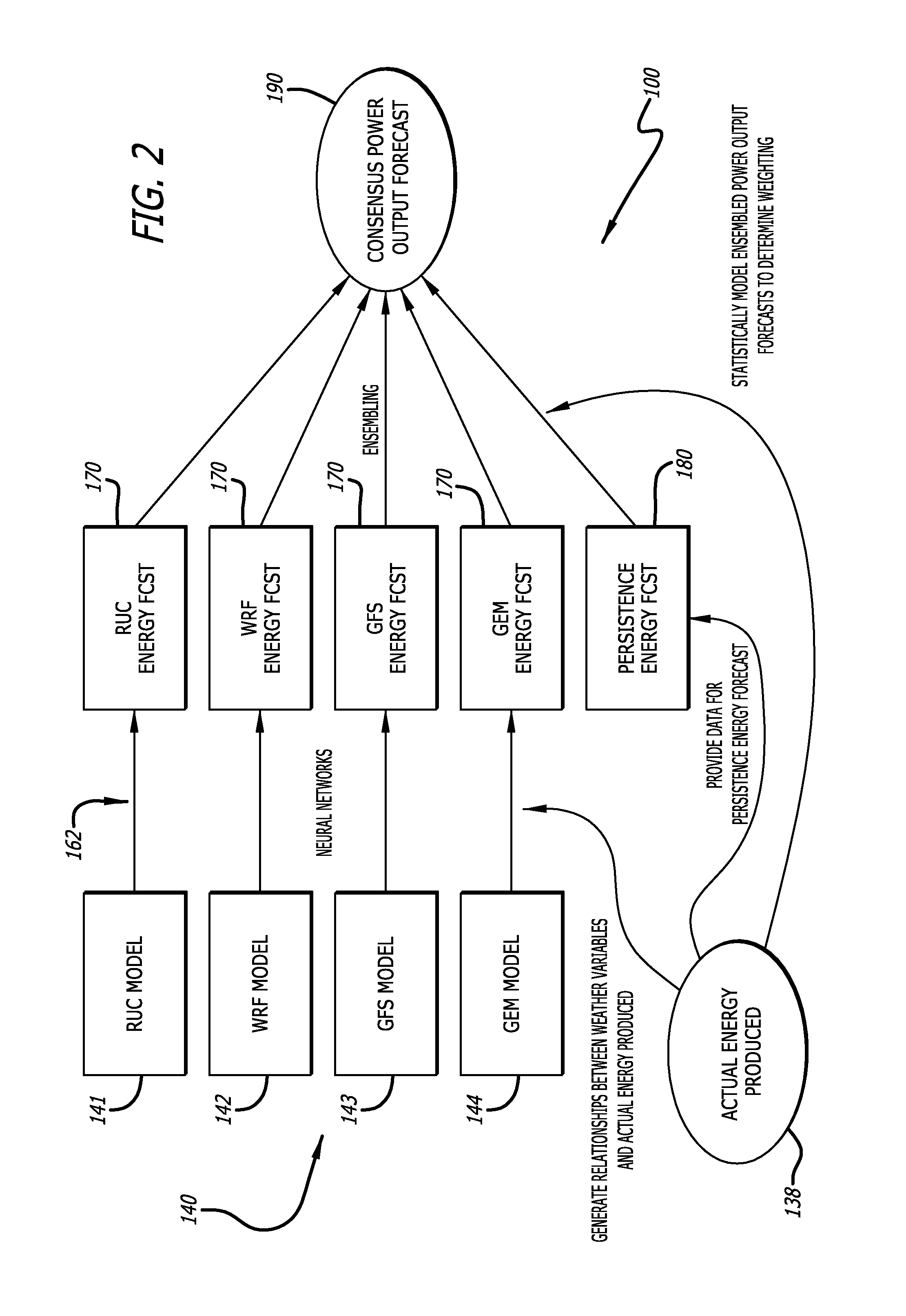Application of artificial intelligence techniques and statistical ensembling to forecast power output of a wind energy facility
a technology of artificial intelligence and power output, applied in the field of wind energy, can solve the problems of cumbersome conversion, limiting the practicality of applying such a process, and cumbersome application of this concept in concert with other concepts, such as ensemble modeling, to achieve the effect of improving overall forecast accuracy
- Summary
- Abstract
- Description
- Claims
- Application Information
AI Technical Summary
Benefits of technology
Problems solved by technology
Method used
Image
Examples
Embodiment Construction
[0016]In the following description of the present invention reference is made to the accompanying figures which form a part thereof, and in which is shown, by way of illustration, exemplary embodiments illustrating the principles of the present invention and how it is practiced. Other embodiments will be utilized to practice the present invention and structural and functional changes will be made thereto without departing from the scope of the present invention.
[0017]FIG. 1 is a diagram of a wind energy forecasting system 100 for a wind energy facility 110. The wind energy forecasting system 100 includes a data ingest module 120 that accepts a plurality of input data 130 from many different sources. The plurality of input data 130 includes one or more weather variables 132 from numerical weather prediction (NWP) models 140. These one or more weather variables collectively represent meteorological forecasts 150 for the area in which the wind energy facility 110 is located. A pluralit...
PUM
 Login to View More
Login to View More Abstract
Description
Claims
Application Information
 Login to View More
Login to View More - R&D
- Intellectual Property
- Life Sciences
- Materials
- Tech Scout
- Unparalleled Data Quality
- Higher Quality Content
- 60% Fewer Hallucinations
Browse by: Latest US Patents, China's latest patents, Technical Efficacy Thesaurus, Application Domain, Technology Topic, Popular Technical Reports.
© 2025 PatSnap. All rights reserved.Legal|Privacy policy|Modern Slavery Act Transparency Statement|Sitemap|About US| Contact US: help@patsnap.com



